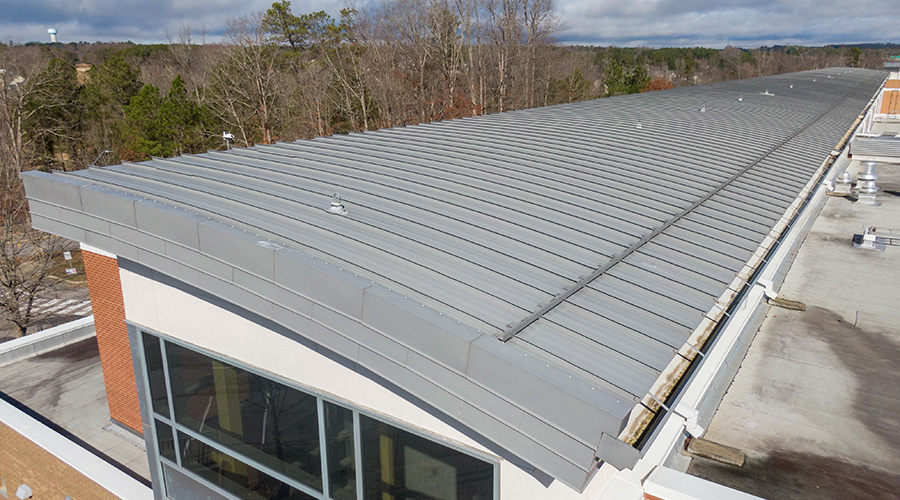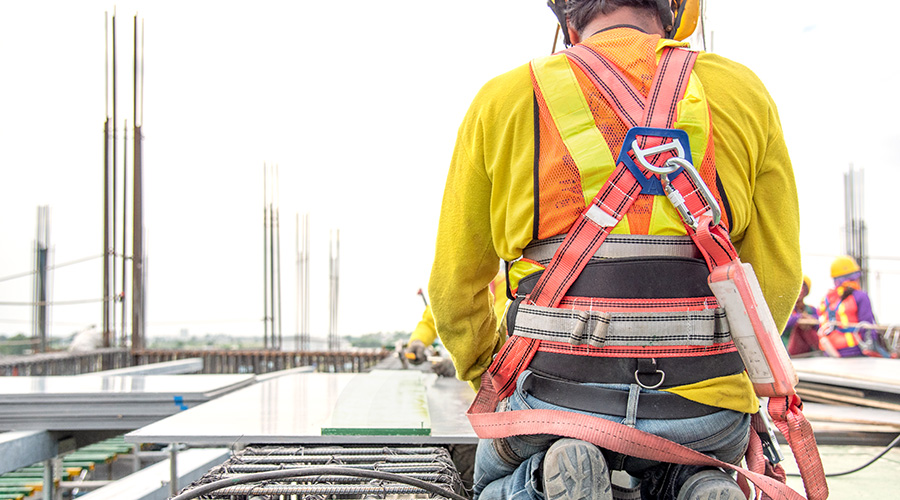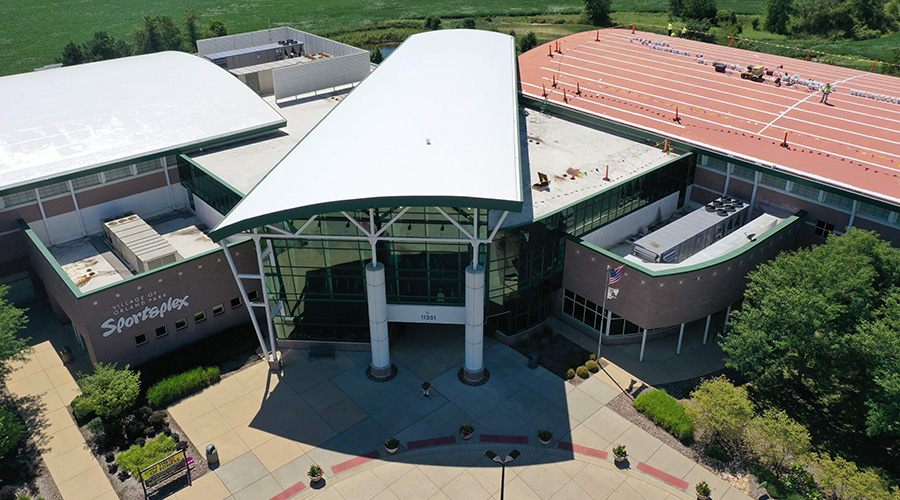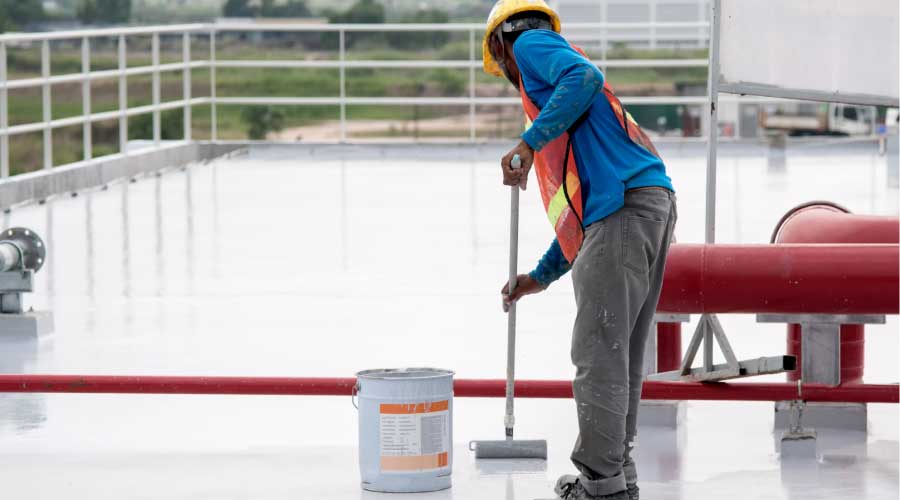Making Roof Coatings Work
Understanding product formulations and features, as well as preparation and maintenance requirements, can help managers ensure long-term performance
Roof maintenance is important for protecting the asset that is most essential for keeping tenants dry and preventing water intrusion from above. An important component of this asset management strategy is regular roofing replacement.
But unexpected problems often arise. What if an 8- or 10-year-old roof starts leaking but is not budgeted for replacement for several years? What if rising costs for heating and cooling a building have become a more important consideration?
In both cases, a roof coating might be a viable solution, provided the existing roofing system is a good candidate for a roof coating, the maintenance manager specifies an appropriate coating, and workers install the coating properly.
Evaluating roof coatings for use on existing roofing is similar to evaluating replacement roofs for a particular building, construction type, climate, and other special considerations. Managers need to fully research coatings and carefully choose the most appropriate product.
But not all roof coatings are compatible with all roofing products, and applying a coating might not correct many types of roof problems. Understanding roof coating options and application requirements can help managers avoid the most common problems that undermine the investment of time and money.
Determine a Purpose
The first question a manager should ask is, “What is the primary purpose for a roof coating on this building?”
If the primary purpose is to provide limited solar protection for the roof surface or to add to the potential service life of the existing roof, managers have many product choices.
If the primary purpose is to provide maximum solar protection for an existing roof, a highly reflective white roof coating is required, and the choices are somewhat limited.
If waterproofing and or leak repair is also a goal, then a monolithic waterproof coating, such as a urethane or a combination of products, is a more appropriate selection.
Finally, if the primary purpose is to save energy or comply with energy codes, a highly reflective surface is essential, and a manager might add a sprayed polyurethane foam (SPF) to the assembly.
Once managers have established goals for the project, they can further narrow their product choices by evaluating existing building and examining product characteristics.
Select a Coating
The most common roof coating product categories are:
• asphalt cutbacks and emulsions
• polymer-modified acrylic elastomers and polyureas
• silicones
• high-performance urethanes
• SPF
ASPHALT COATINGS. Asphalt cutbacks are bituminous products thinned with a solvent to aid application. Manufacturers add aluminum pigments to the topcoats for reflectivity, while other modifiers can enhance strength, longevity and thickness. Fiberglass fibers or strands can provide additional reinforcement.
Asphalt emulsions are similar to cutbacks but use water as a carrier instead of solvents. Some emulsions comply with minimum standards for volatile organic compounds (VOC), and emulsions have many of the same modifiers and additives as asphalt cutbacks.
Aluminum pigments added to asphalt cutbacks and emulsions give coatings solar reflectance index (SRI) values of 21-30 on a scale of 0-100. The SRI index measures the ability of surfaces to reflect solar radiation and to emit stored radiation from the surface. This index uses zero as a standard black surface, with a reflectance of 0.05 and an emittance of 0.90, and 100 as a standard white surface, with a reflectance of 0.80 and an emittance of 0.90.
ACRYLIC ELASTOMERS. These new-generation coatings have a highly reflective surface, often with an SRI greater than 100. Most highly reflective acrylic elastomers are white, and workers can install them over existing bituminous or non-bituminous roofing. Acrylic elastomers typically are specified at 12 mils for five-year warranties and at 20 mils for 10-year warranties. Some manufacturers specify up to 40 mil applications.
POLYUREAS. These polymer-modified products are relatively new to the market. Some polyureas are specified at similar application rates to acrylic elastomers, and some are specified at much thicker dry mil thicknesses of up to 60 mils, which is similar to urethane coatings.
Polymer-modified products and silicone coatings not already mentioned are less common. But manufacturers are always modifying formulations, and new products regularly enter the market.
URETHANES. These polymer-modified products are most commonly installed on concrete substrates, such as parking decks or on wood substrates. Urethanes can be one- or two-component formulations and typically are not applied over other roofing products.
SPF. This product is really an insulating system, but it deserves mentioning with coatings. SPF roofing is spray-applied foam that forms to any roof curb or penetration and provides insulating value. The surface of SPF insulation typically is coated with a urethane for protection and waterproofing.
Surfaces and Systems
Manufacturers initially developed roof coatings for application over bituminous roofing products, such as traditional built-up roofing and modified bitumen roofing. Both of these roof types are excellent candidates for a roof coating, provided the surface is smooth and accessible.
Gravel surfacing is extremely difficult to coat, although it is sometimes done with limited success. The age of a bituminous roofing system also is important because aged membranes often exhibit surface degradation and irregularities that workers must address before applying a coating.
Ethylene propylene diene monomer (EPDM) roofing also can be coated, but product choices are limited. Workers can apply acrylic polymers and urethanes, and some manufacturers will extend their present warranties if this work is done. Managers should check with the manufacturer of existing EPDM roofing for compatible coating products.
Other types of single-ply roofing, including polyvinyl chloride (PVC), are unlikely to benefit from coating applications because most have integrated solar protection and reflectivity. Steep roofing tiles and sheet metal roofing also can be coated, and a new generation of engineered pigments for polymeric products offer a range of colors other than white for application.
Finally, concrete roof decks are excellent candidates for roof coatings. Parking decks usually feature waterproof coatings designed to withstand pedestrian and vehicular traffic, road salt and oil. A number of polymers and epoxy products are available for concrete decks, but urethane coatings are the most cost-effective method for waterproofing traffic areas.
Trouble Spots
Many common problems with roof-coating applications are climate specific and vary by geography. In no particular order, here are the top 10 pitfalls managers must avoid in coating applications:
1. Poor product choice.
2. Expectation of leak repair. Many coatings provide solar protection but not monolithic waterproofing. A thin coating offers limited ability to bridge cracks, fill voids and stop leaks in an existing membrane. Some coatings manufacturers even state in their literature that their products are not designed to seal leaks, and they recommend repairs before application. Workers should patch all known leaks, holes, blisters and surface irregularities before applying a coating.
3. Blisters. Blistering in a roof coating most often arises from the presence of moisture under the coating. A roof that has leaked extensively might have wet, rigid insulation or moisture trapped between its plies. Before applying a coating, workers should remove all moisture and make sure the roof surface is dry.
4. Delamination. Delamination most often results from moisture, dirt or other contaminants on the existing roof surface, or from failing to apply a primer before the base coat. Workers should scrape loose material from existing coatings and prepare the surface according to manufacturer recommendations. Surface preparation is an essential step in achieving a long-lasting coating application.
5. Pinholes, skips and holidays. A complete, monolithic and continuous surface can ensure proper coating performance, so it is essential to avoid these problems related to inconsistent application. A consistent thickness also is important, so supervisors need to monitor the contractor to ensure workers achieve the recommended coverage.
6. Ambient temperature too high or too low. Applying a coating during the hottest day of summer or the coldest day of winter can cause problems with cure times and harm the quality of the finished product. In general, workers should not install many products at ambient temperatures below 50 degrees or above 90 degrees. Most manufacturers establish minimum and maximum ambient temperatures for application.
7. Improper mixing or application of two-component systems. Mixed on site, these systems have a pot life, and the curing process begins once they are mixed. Pot life might range from minutes to hours, and if workers exceed it, they should discard the coating.
8. Inadequate surface cleaning. To provide a reflective surface that will save energy after a coating application, workers must keep it clean. Soiled surfaces can negate any energy savings a reflective coating can provide. Workers should closely follow the manufacturer’s cleaning recommendations.
9. Infrequent reapplication. Many coatings have recommended service lives of only five years and must be reapplied to perform properly.
10. Disregarding manufacturer recommendations. Whether the issue is moisture, leak repairs, primers, surface preparation, application temperatures, mixing, cleaning, or service lives, the coating application requirements vary by manufacturer.
Managers should consult with a technical representative, read manufacturer recommendations, and ensure the contractor follows recommended practices for all coating applications.
Wade L. Vorley, CDT, Associate AIA, is an associate at Wiss, Janney, Elstner Associates — www.wje.com — in Seattle. He has provided roof-consulting services for a variety of roofing system types in California and the Pacific Northwest for more than 20 years.
Related Topics:











